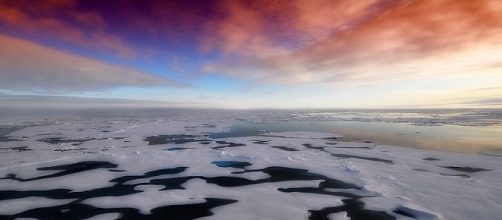Global warming and the extent is becoming increasingly evident as the years’ pass. The next global issue on the ever-growing list is the possibility of an Ice-free Arctic summer. Back in 2013 The Guardian reported that the US Navy predicted that the Arctic could have faced a “ice-free” summer by 2016. But what is an ice-free Arctic? And what are the possible effects on the planets eco-system and how would the planet change if this did occur?
In basic terms an ice-free Arctic isn’t “ice-free” and it is defined in “having less than 1 million square kilometres of sea ice”.
The IPCC AR5 define “nearly ice-free conditions”, when the sea ice extent is less than 106 km2 for 5 consecutive years.
Predictions and reality
It was reported that a US Department of Energy research project, led by US Navy scientists, predicted that the Arctic could have lost its summer sea ice cover as early as 2016; 84 years ahead of conventional model projections.
The complex modelling techniques used to make projections are more accurate than others. The paper itself is highly critical of global climate models (GCM) and says that most models (including regional), exclude or poorly represent most Arctic climatic processes, leaving existing models highly inaccurate when it comes to physical processes of specific polar regions that may not be accounted for.
Even more chilling is that this prediction could happen this year, as a leading scientist claimed in 2015 “for the first time in 100,000 years the Arctic may be without sea ice as early as next year or the year after if we are lucky”. Ocean Physics Professor Peter Wadhams from Cambridge University based this prediction on data gathered from the US National Snow and Ice Date Center.
The data showed that on the 1st June, 2016, there was an estimated 11.1 square kilometres of sea ice; below the average of the last 30 years, which is 12.7 million square kilometres. That is an area roughly the size of the UK lost. As predicted in 2013 by Professor Wieslaw Maslowski.
Effects of an ice-free Arctic
Arctic ice is highly influential on atmospheric circulation and this extends to the weather and climate.
America would feel the worst effects of the loss of sea ice, with snowfall that would act as insulation on the remaining ice, keeping it warm and not allowing it to grow. Storms would increase with stronger winds that will cause waves to be whipped up, subsequently pounding the shore, eroding it. Bringing temperatures up and causing the permafrost to thaw, leading to “drunken” trees and buildings or see entire villages slip into the sea.
The global effects would be to the Arctic’s ability to function as a cooling system for oceans, causing both the Pacific and Atlantic oceans to warm considerably. The Arctic has been acting as a global cooler for the world’s oceans, but has been losing roughly 350 watts of heat per square metre of open ocean to the atmosphere during the storm fall season as well as the early part of winter.
That increased inability to regulate the temperatures will in-turn affect the temperature differences between the northern Polar region and more southern areas, and it’s in the atmosphere that these temperatures sustain the jet stream, a stream of high speed winds flowing from east to west, that typically steer the weather system in the northern hemisphere.
The jet stream and weather patterns
The loss of these temperature gradients could cause certain weather patterns to stall within the jet stream, leading to longer weather cycles in specific regions. Leading to longer heat waves, causing lengthy dehydration and drought spells, or more precipitation causing serious flooding.
Further warming of the oceans allows more thermal expansion of the waters themselves, causing the distance between the liquid water molecules to expand and this raises the sea levels; currently occurring at a rate of 3 millimetres per year. The Arctic ocean is important to global eco-systems and the ability to sustain life.

